One of the biggest hits of the modern board game renaissance, Cephalofair’s Gloomhaven has made a name for itself not just for its deep strategy but also its famously massive size. Clocking in at 18 pounds (which they quickly surpassed with the 35 pound Frosthaven), the sheer scale of the game has become a borderline meme within the hobby. So when Cephalofair announced Gloomhaven: Buttons & Bugs last year, a version so small it can fit into the palm of your hand, it made waves. How do you condense all that story, all that strategy, all that game into a box that’d be too small to put a healthy hamster in? Well, designer Nikki Valens (Artisans of Splendant Vale, Quirky Circuits) teamed up with Joe Klipfel to find out. I got a chance to sit down with Nikki at Gen Con to learn more about the shrinking process, including the game’s origins as an 18 card title called Gloomholdin‘ and managing the expectations of one of board games most passionate fanbases.
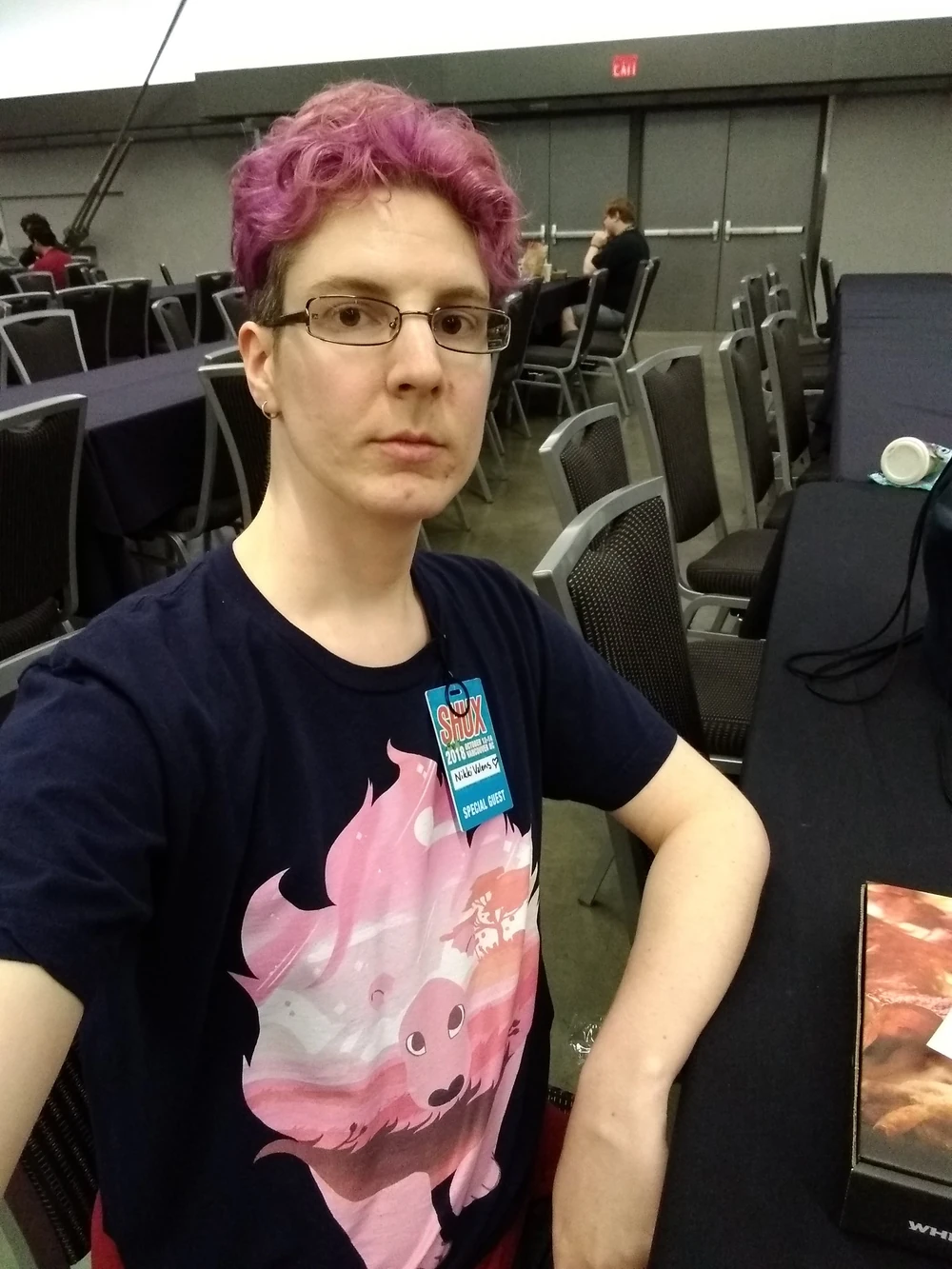
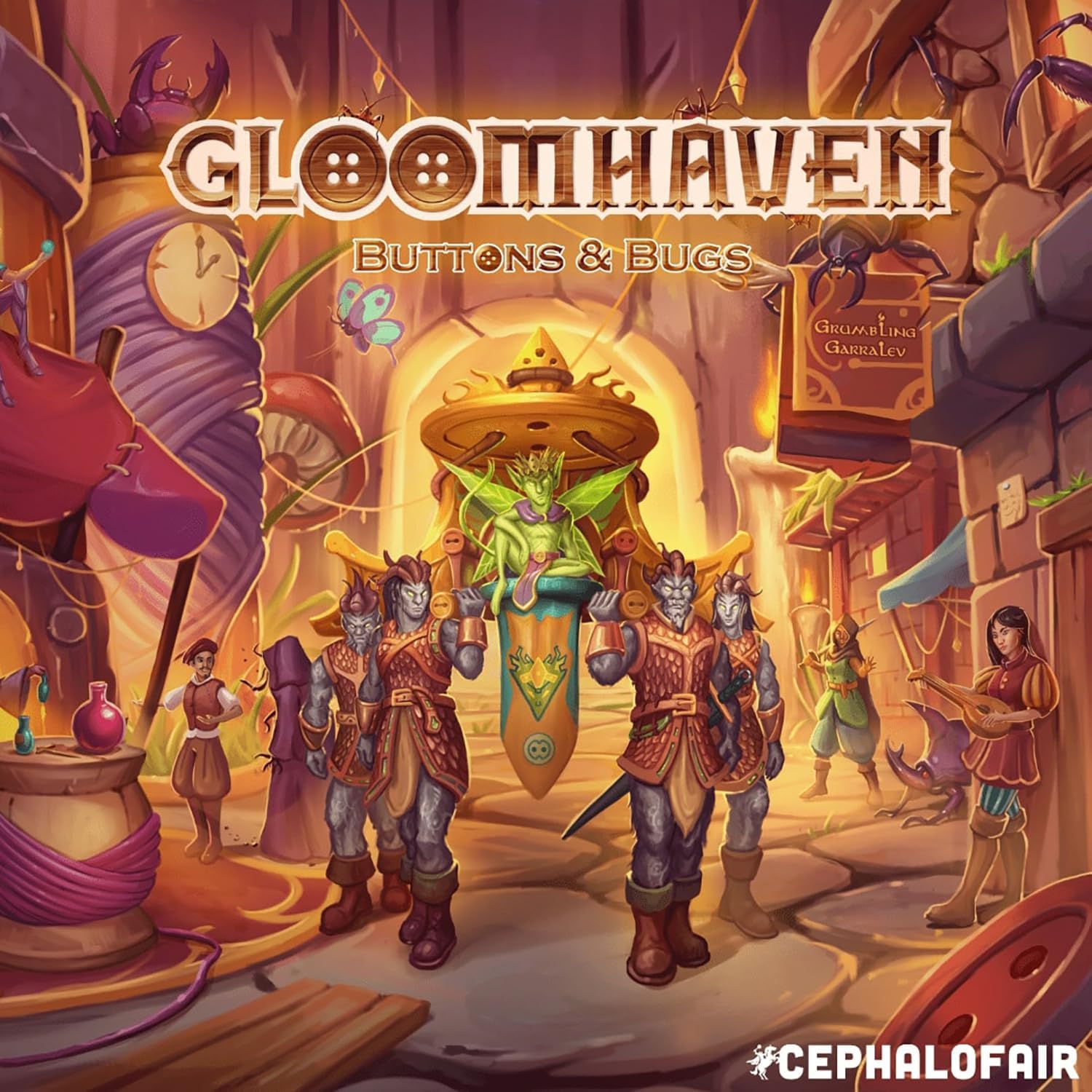
Gloomhaven is famously a big game, and Frosthaven is even bigger. Now we have Buttons & Bugs which goes completely in the opposite direction and is one of the tiniest games I’ve seen. What was the starting point for the design of the game? Did you pitch it or was it something Cephalofair approached you with?
Nikki: It kind of came in a weird roundabout way. So Joe Klipfel is a fan-designer who makes who makes a lot of microgames, a 18-card versions of big stuff made Gloomholdin,’ which is an 18 card version of Gloomhaven, as well as versions of Mage Knight and other big games. It gained enough popularity in that small microgame fan scene that Cephalofair noticed and said “Hey maybe we can make an official version of this?” So they reached out to Joe to see if that’s the thing that he would want to do. Then they reached out to me to do development for it, to basically work with Joe and figure out exactly what it was that he was working with, iron out the kinks that were in there, and then create this full playable campaign for some kind of handheld Gloomhaven.
What ended up happening, though, is we came up with a really cool game. We really liked it, we thought it was really clever, we liked playing it. But it was a little convoluted to get into. And most importantly, it wasn’t what people expected.
When we told them we have “Micro Gloomhaven“, and they would sit down to play it, they were expecting Gloomhaven, just really small. So when they were met with this different system that’s clearly inspired by Gloomhaven, but plays quite a bit differently and is a bit more cumbersome physically, the disconnect was enough that we didn’t have much player retention at all. So we decided, what if we just do the thing that everyone’s expecting us to do, which is literally just make tiny, tiny Gloomhaven. So we pivoted kind of late in design. We took all of the different elements that had been in Gloomholdin’ that we really liked, like the double sided cards, the way that the modifier tables work and everything else and we transported them into a more visibly Gloomhaven type of game.
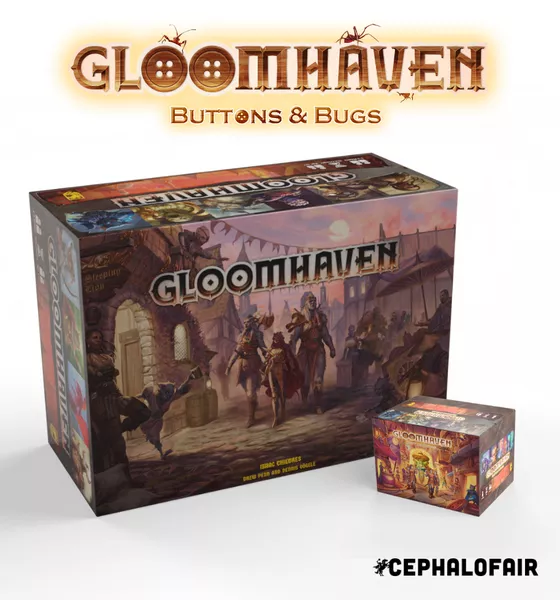
When Cephalofair is not still reeling from this last Kickstarter that’s been going on, I’d like to push to release what we did make, just as sort of a promotional item. Because I don’t think it’s gonna be a hit game like the other ones are, but it’s interesting to just be like, here is a deck of 52 cards. You can play Gloomhaven with it. That’s such an interesting, novel concept.
Is there anything particularly in that shift from the original Gloomholdin’ draft to what became Buttons and Bugs that was really difficult or challenging?
Nikki: I think a big thing with it is that, because originally we were trying to do it with only cards and nothing else, there’s a number of systems in place that were necessities for having a system that only used cards. But we translated a lot of that wholesale and it took us a little bit to figure out like, okay, which of these things can we actually rely on other components for, how do we track certain things? Changing even a single component in a game can have a ripple effect where there’s a bunch of other systems that cascade off of it. I think there’s definitely still some parts in Buttons & Bugs that you can see it’s heritage that’s coming from Gloomholdin’ and not from Gloomhaven specifically.
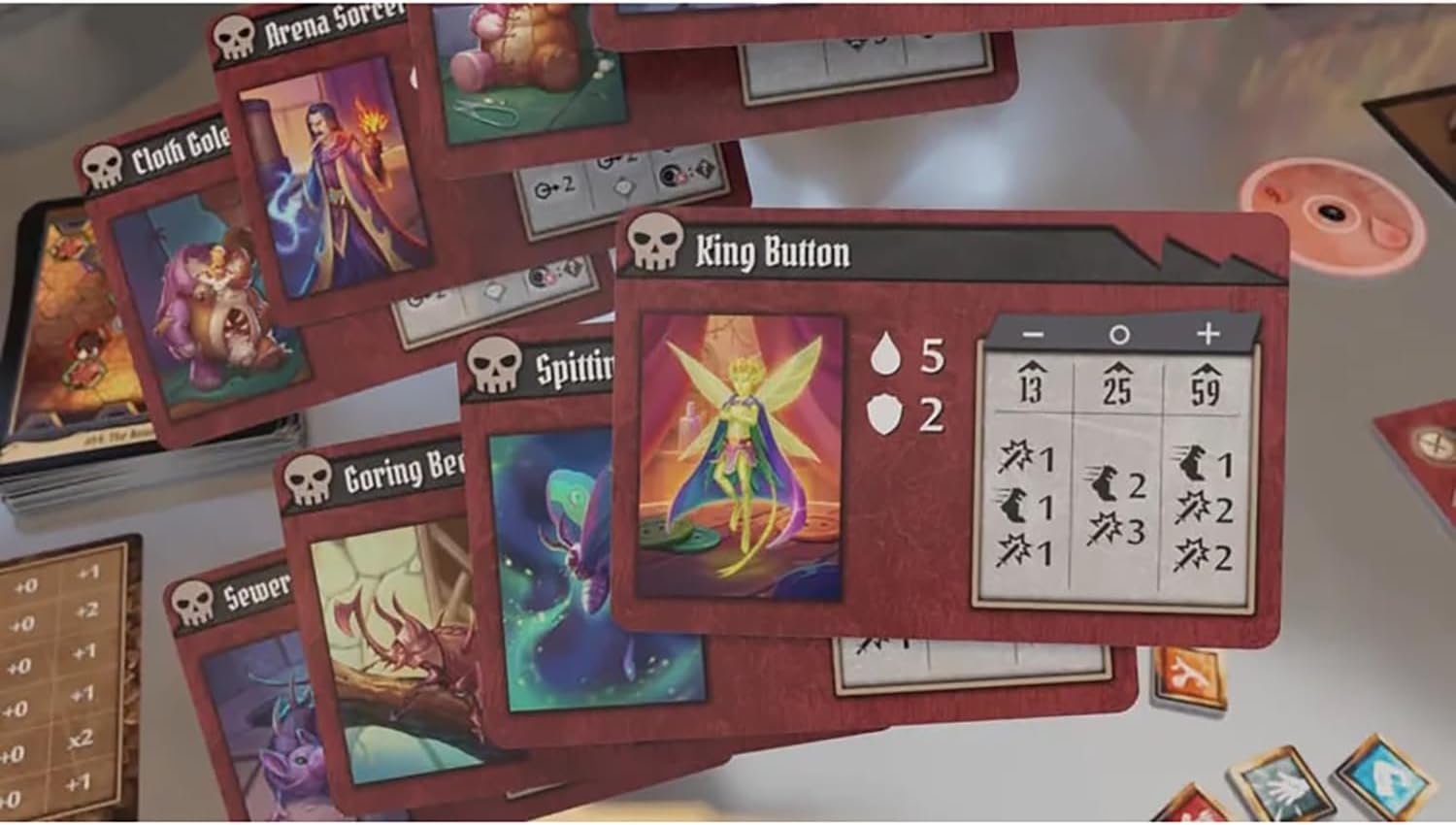
How did the “miniaturized” theme come about for the story? Was that just a natural fit?
Nikki: We didn’t really have a story in mind to begin with as to what we wanted to do. We didn’t really want to just recreate the story of Gloomhaven but tiny. We’d like to make new content for everything that we put out. So when we were brainstorming what we wanted it to be, Isaac [Childres, Head of Cephalofair and designer of Gloomhaven] kind of came up with the story that we ended up using, which is that these other adventuring parties have kind of made a name for themselves and…Hail has become a known entity. So people keep going to Hail to try to become heroes themselves. And she doesn’t want any of this, right? So the idea that she just puts up a hex and goes, “Okay, everyone that knocks on my door, you’re out of here. I don’t wanna deal with you anymore.” So shrinking down the characters literally in-universe was just a fun way to also show that we’re playing with such a smaller game, a smaller scope.
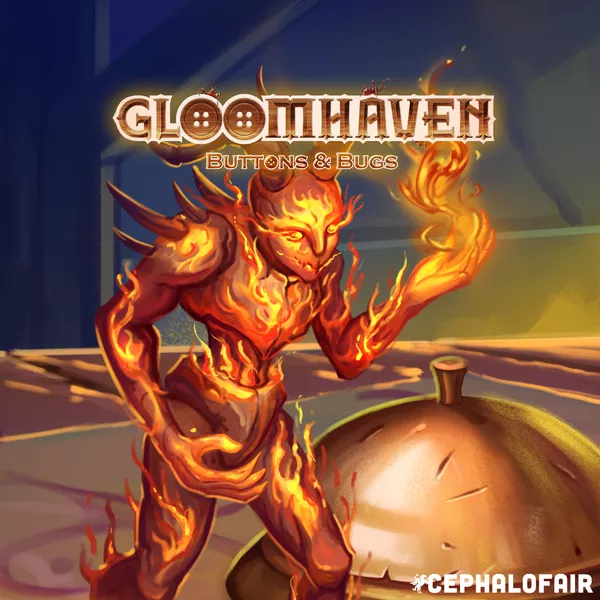
I like to talk about how the campaign for this is 20 scenarios, so it’s almost as large as the Jaws of the Lion campaign. But where Jaws takes place over a whole bunch of the city and the Gloomhaven campaign the city is this tiny little spot on the map and there’s this massive like country that you’re working running around. But in Buttons & Bugs you’re in one building. That’s the whole game. It’s so fun.
Is it meant to be more family friendly? Or does it just seem that way because of the theming?
That’s probably more a consequence of the theming, honestly. They’re not marketing it as such, but I’m getting some of that. I think if you’re trying to teach your kids to play, I think Jaws of the Lion is probably the easier experience there, just because it has a good onboarding, and it’s co-op, you actually are playing along with them and you can help them. But, yeah, the slightly cuter art style, the more colorful art style, that does tend to seem more kid-friendly in any of our entertainment industry stuff.
We did want the game to be simpler. We didn’t want it to have as much overhead that you have to remember things. We didn’t want it to have all of the road events and town events and all of the kind of structure that exists in between scenarios. We wanted it to be a much more concise, you get to kind of pull it out, you get to play a scenario, and then you can put it away and not worry about it. So in that way, it is easier to learn than Big Gloomhaven, just because there’s less stuff, but the depths of strategy is all still there. And in many cases, certain types of strategy that don’t even exist in the big game because of how the cards work or how certain things are different. It is still a full tactical game, even though it’s mechanically a bit more simple.
You can pre-order the second printing of Gloomhaven: Buttons & Bugs at the Cephalofair website, where it’ll run you about $20.
Images via Cephalofair Games
Have strong thoughts about this piece you need to share? Or maybe there’s something else on your mind you’re wanting to talk about with fellow Fandomentals? Head on over to our Community server to join in the conversation!

